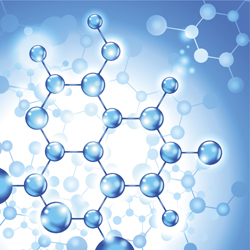Highest-resolution structure of organic molecules
NMR spectroscopy is a powerful tool for deducing detailed structural information about a molecule or material based on the behaviour of the nuclei of its atoms in a magnetic field. Although conventional application was geared toward materials in solution, solid-state NMR (SSNMR) has progressed rapidly as the method of choice to investigate biological systems and pharmaceutical formulations in the solid state. Biological molecules are often formed from a carbon backbone, a chain of carbon atoms to which functional groups are bound, and several methods have been proposed to measure the distances between these carbon atoms to obtain information about their three-dimensional (3D) structure and hence gain insights into their biological function. However, because they rely on detection of an NMR-active isotope of carbon present in very low abundance, they are typically time and cost intensive. The EU-funded project SSNMRMETHOD was designed to develop a novel SSNMR method based on the observation of hydrogen nuclei, the most abundant in nature. Protons are magnetically active and in high abundance, but they are difficult to detect due to strong dipolar couplings between them that generate very large and unresolved signals. The project developed the first SSNMR method that enables direct estimation of the internuclear 1H-1H dipolar coupling in solid systems, from which distances can be derived. The unique feature of the project's solution lies in an innovative approach providing a sharp control of the amount of 1H-1H dipolar coupling contributing to the experiment. By suitably choosing the experimental conditions, the new SSNMR method makes it possible to obtain nicely resolved proton spectra of solid organic samples from which 1H-1H distances for specific pairs of nuclei can be obtained with impressive accuracy. Application to two model systems demonstrated that the method gives access to structural resolution 10–50 times higher than the one currently achievable with other methods for structural analysis of solids. SSNMRMETHOD outcomes represent an important leap in technology available for the quantitative determination of the structure of solids using hydrogen atoms. It is directly applicable to investigations of pharmaceuticals and, for the first time, opens the door to analysis of the hydrogen bond network that often stabilises the supramolecular structure of numerous organic solids. Rapid and cost-effective high-resolution analysis of organic molecules will no doubt lead to discovery and innovation in fields from biomedicine to energy to the environment.



